Home › Projects › White Book › Spatial Economics: On the Threshold of a New World
Spatial Economics: On the Threshold of a New World
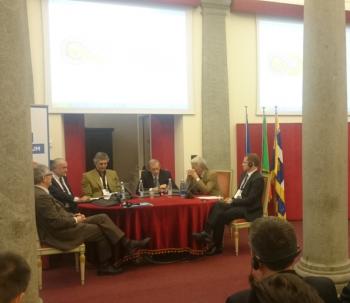
How 3-D printers, the Internet, and high-speed trains will change cities
How cities will change as a result of economically efficient small-scale production of goods and supply of services, ubiquitous high speed Internet connectivity, and lower transportation costs.
Dmitry Naberezhnev *,
Partner, Bain & Company
For centuries, the time and cost associated with distance shaped the map of civilization. The introduction of technology that reduced the cost or time needed to move goods inevitably changed the global landscape—we have seen this throughout history with everything from horses to ballistic missiles. Even now, spatial economics determines where businesses can produce and sell, where employers locate jobs, and where families choose to live, work, shop and play. What if cost fell dramatically, thanks to new technologies? If people could work from anywhere, would crowded neighborhoods start to thin out?
That change already has begun in the world’s advanced economies and is gaining momentum. Over the next two decades, the cost of distance will decline sharply, according to Bain research, altering the way we live and our attitude to work. What’s more, the change will happen faster than most people expect and more broadly than many imagine.
The catalyst for this historic shift is an array of new platform technologies that dramatically reduce the cost of distance and the time of transportation. Multibillion-dollar investments in robotics, 3-D printing, delivery drones, logistics technology and autonomous vehicles are giving rise to new products and services that make the cost of moving people, goods and information far less prohibitive. As those technologies combine and converge, changes in spatial economics will become more and more pronounced, forcing many companies to rethink their strategies and investments and causing individuals to reassess where they work, live and bring up their children.
Individuals may opt to live further from city centers, for example, as advances in transportation and connectivity allow them the abundant space of a rural town combined with many of the employment options, goods and services once available only in cities. This will enable cities to become centers of larger urban areas and achieve even higher concentrations of economic, informational and cultural potential, creating additional momentum for development. In China, an example is Jing–Jin–Ji, a megacity of 130 million people that combines Beijing, Tianjin and Hebei Province. As of now, the time required to travel to the center of Beijing from an outlying residential area may be up to five hours. In the Jing–Jin–Ji metropolis, high-speed trains will connect a number of local economic centers, and the time required to travel from one sub-center to another will not exceed one hour.
We believe that, by 2025, technologically advanced countries will find themselves at the forefront of defining a new post-urban economy. Spatial economics will give rise to new markets, innovative businesses, new lifestyles and different career opportunities. But the coming transformation, like every period of change, will also bring risks and major changes.
Many major international companies are already evaluating the new investment opportunities that will become available as the cost of distance goes down. Breakthroughs in transportation technology, for example, will be critical to developing a new generation of goods and services adapted to spatial economics. That includes last-mile logistics, driverless vehicles and the technologies and components that support those sectors.
No one can predict the exact evolution of economy and society as the cost of distance declines. Much will depend on the speed of technological change and the breadth of discoveries. However, one thing is clear: spatial economics will shake up long-held assumptions about the scale and opportunities for growth.
Three key trends will shape the changes to come: small-scale production of goods and provision of services will become more efficient; high-speed connectivity will become ubiquitous; and the cost of physical transport will fall sharply.
As the cost of distance goes down, companies will be able to profitably manufacture products in smaller volumes. Advances in service robotics, 3-D printing, and logistics technology already are beginning to lower costs in manufacturing and service, allowing both to be profitable at reduced scale, including batches of one.
New business models will emerge in the race to replace physical items with their digital equivalents
Additive manufacturing, or 3-D printing, already is eroding the cost of distance by allowing local production of standard parts and complex one-off items, reducing the need for central manufacturing and warehousing. Storing designs electronically and using a standard set of printer substrates to build products eliminates the need for large warehouses while increasing the variety of parts smaller units can inventory. That development presages a shift to smaller warehouses near end-users and away from huge storage depots on cheap land near major transportation arteries.
Reduced economies of scale and scope, in turn, will open up opportunities to live in more places. Companies may opt for smaller manufacturing units that are closer to the customer, so they can tailor products more quickly to evolving local tastes.
In the post-urban economy, companies will push the boundaries of moving information and ideas, rather than people and goods. New business models will arise around the race to substitute part or all of a physical item with digital equivalents. As millennials become a dominant share of the workforce this decade, physical freedom and increased online skills will add to the momentum for telecommuting. Already, 37% of US workers say they telecommute or have done so in the past (on average, two days per month). That indicator increases consistently: in 2008, 30% of those surveyed worked online, compared to only 9% in 1995.
Total connectivity will enable new digital service models across many sectors, including advanced two-way energy management systems and remote healthcare monitoring and delivery. Instead of getting on a plane to visit world-class clinics and physicians, for example, patients will go to local satellite clinics where they can connect to the same medical experts for virtual diagnosis and treatment.
Telecommunication technologies significantly drive down the need to move both people and goods. However, efficient transportation remains the prerequisite for expanding the physical and economic perimeters of cities.
The expansion of railroad infrastructure and high-speed train technology facilitates the reduction of transportation cost and time, and helps to create new urban environments. Covering more distance in less time changes the traditional outline of cities. Consider the UK, where it takes 30 minutes to travel up to 13 km from the center of London to the northeast Wembley district, whereas one can only go as far as 8 km to the southwest over the same time. In Paris, suburban trains in the southwest, northwest and east can cover up to 30 km in one hour—twice as fast as within the rest of the city perimeter.
Transport efficiency improvements are facilitating the development of logistics technologies that allow businesses to deliver goods to consumers’ homes faster and at ever-decreasing cost. Drone delivery of a package already costs 75% to 80% less than human delivery. Several companies, including Amazon, Google and DHL, have developed delivery-drone prototypes, but regulatory approvals remain a barrier. NASA is working on an Internet-based system that will manage low-altitude unmanned aerial vehicles, including drones, and the US Federal Aviation Administration expects to begin full certification of drones in 2020. Globally, Australia and New Zealand already allow more liberal use of drones for commercial activity than the US or Canada.
The lower cost of distance resulting from these factors will result in a geographical dispersion of labor and population centers which will seriously impact demographics and infrastructure in the developed world.
Over the next decade, the growth of households in rural and exurban areas vs. in city centers will start to take the shape of a barbell, according to research by Bain’s Macro Trends Group. Some cities will continue to grow successfully, attracting the wealthy, the young and empty nesters. Another segment of households—especially middle-class families—is likely to opt for a big increase in space at lower cost, moving far from city centers. Caught in the middle are the traditional suburbs—the old compromise that is neither spaciously rural nor conveniently urban—and small or medium-sized cities lacking sufficient urban appeal.
On one end of the barbell will be cities with large walkable urban cores like New York, San Francisco, London and Paris. These urban centers will be inhabited by an affluent cohort able to choose where to live without financial constraints. As large cities compete for residents, industry clusters—like the technology hub in Silicon Valley or the financial sectors in New York and London—will become even more important sources of urban competitive advantage.
The other end of the barbell will include what we call the New Villages—residential zones lying at the furthest edge of the traditional metropolitan commuter belt, more than 50 miles or a 90-minute commute from city centers. The New Village model will blend the most desirable features of rural living, particularly lots of living space at low cost, with many urban amenities. The declining cost of distance will help diminish the gap in goods, services, education and healthcare between the densely packed urban center and the New Village.
The migration already has begun. The Bain Macro Trends Group analyzed US Census Bureau data for 360 metropolitan statistical areas, defining the urban center as being 10 miles or less from the city center, about the average one-way commute. In 2000, just under half the US population (49.7%) lived within 10 miles of a city center. But by 2010, shortly after the Great Recession ended and before the more recent restart of exurban migration, that number had fallen to 47.5%.
Data shows as much as 8% of the total US population has exited urban centers over the course of a decade. In 2025, that population is expected to be 38 million higher than in 2010, with about 4 million of the increase going to the outermost exurbs. Within a decade, the country’s exurban population may outstrip the urban center population.
In Western Europe, statistics also show a clear trend toward the de-urbanization of big cities. This is happening even more rapidly than in the US due to Europe’s wider network of convenient high-speed railways. City-level data for cities like Stockholm show the rate of growth of suburbs and exurbs was almost twice that of core cities between 2001 and 2007. During this period, city center and inner suburban London lost more than 100,000 residents (nearly 600,000 domestic residents with a considerable offset due to foreign immigration), while inner and outer exurbs—the ring of counties outside the green belt—added more than 300,000 residents.
In a post-urban economy, it will be even less important to live within commuting distance of an office building, or to relocate for a job. Instead, people will choose where to live based on lifestyle characteristics and amenities, such as good weather, a vibrant social and cultural scene, proximity to recreational activities or extended family.
It is clear that some urban features are fixed, like climate and natural geography. But other features can be shaped by development initiatives and policy, including civic arts and culture, universities and centers of intellectual capital development. Government regulations and tax policy are equally important. These features may become the basis on which cities compete. Towns and suburbs in the middle of the urban barbell will have to improve their living conditions and infrastructure. Otherwise, they will face decay.
The diffusion of economic activity will go hand-in-hand with the establishment of combined economic spaces like China’s Jing–Jin–Ji, and will have a significant impact on transport infrastructure. Large projects are designed to maximize their coverage of economic zones. For example, in Japan, the high-speed Tokaido and Sanyo Shinkansen railways are 1,180 km long, go through 11 cities, and cover territories with a population of approximately 100 million. In China, the high-speed Beijing–Shanghai line connects the two large metropolises but also passes through a number of smaller cities, covering territories with a population of 300 million. The integration of local economic centers into bigger clusters will allow the new megacities to raise the level of economic activity and stimulate the establishment of additional cross-regional and international infrastructure. High-speed transport will play a crucial role in determining the future structure of cities.
Cities also have to reduce bottlenecks in transport infrastructure capacity by building new interchange stations. These stations will help to improve passenger routes and goods flows and make different modes of transport more effective and compatible. From the perspective of architecture and logistics, urban infrastructure should be conceptually adjusted to accommodate high-speed vehicles.
Structural changes in spatial economics are only a part of the much broader economic, social and demographic transformation, the sweeping outlines of which are just beginning to show up in data and in early commercialization-stage innovations. And while much will depend on the speed of technological change and the confluence of breakthroughs, one thing is obvious: changes in spatial economics have already begun, and will cause significant social and economic transformation in the coming decade.
Kommersant Vlast magazine No. 18, dated 09.05.2016, p. 38
* - This paper has been co-authored by Harris, Karen, Andrew Schwedel and Austin Kimson.
Sign up for MIR initiative email updates
Sign up to receive monthly notifications about new arctiles published and other events on your email.
Other articles
 Mario Oriol
Mario Oriol
Intermodality technologies
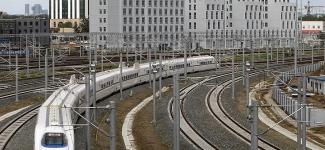 Zhu Ying
Zhu Ying
High speed railway’s impact on China
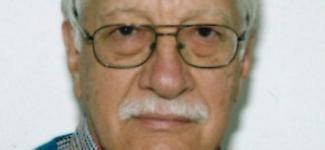 Eugenio Muzio
Eugenio Muzio
Intermobility Strategy for the METR Region
 Michele Molinari
Michele Molinari
A vision for seamless transport in the METR region
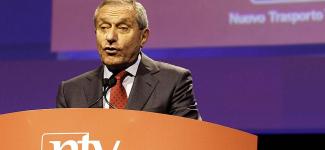 Giuseppe Sciarrone
Giuseppe Sciarrone
Land transportation networks and corridors
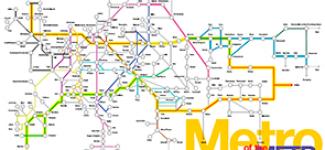 Aleksandr Misharin
Aleksandr Misharin
